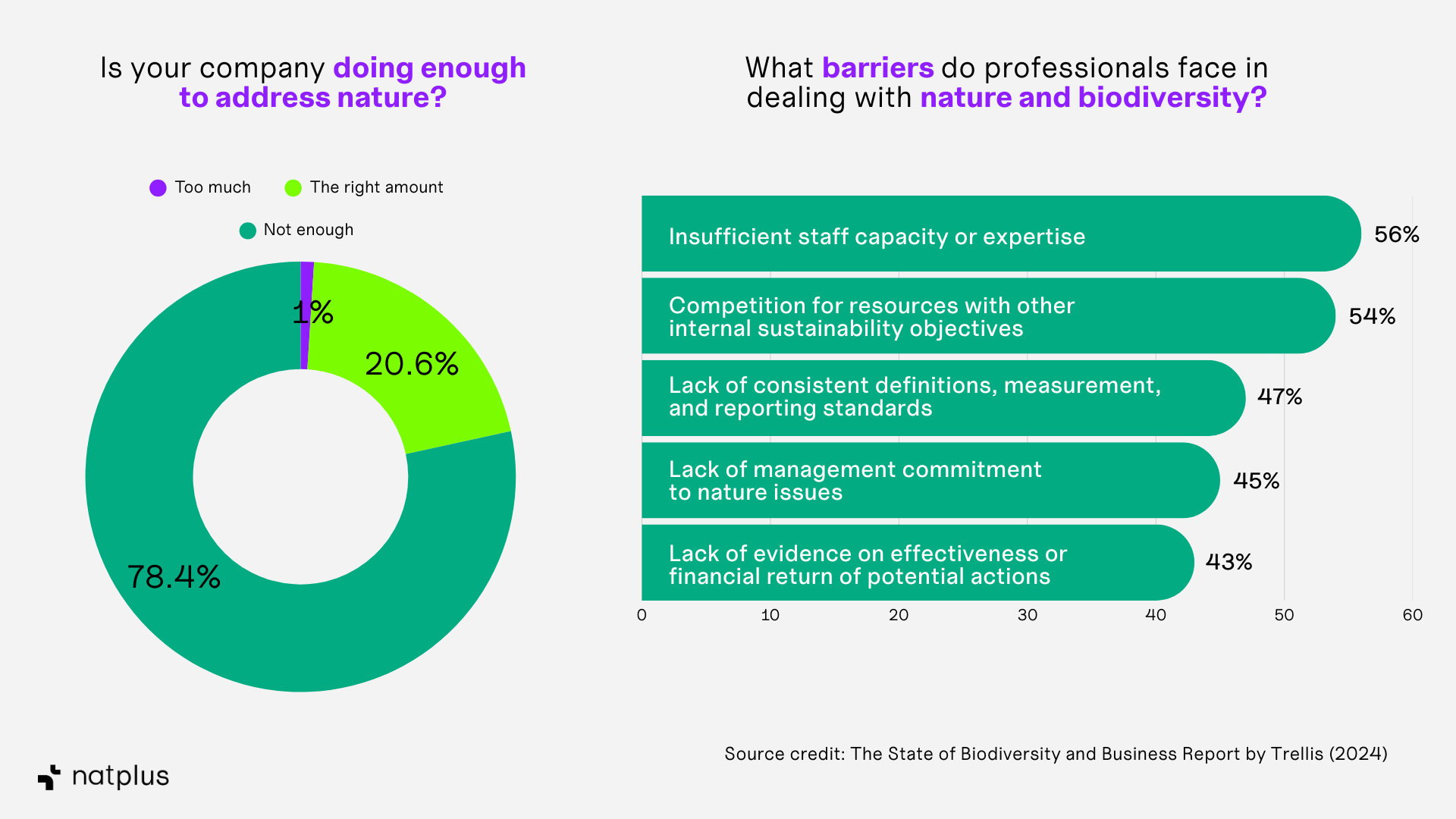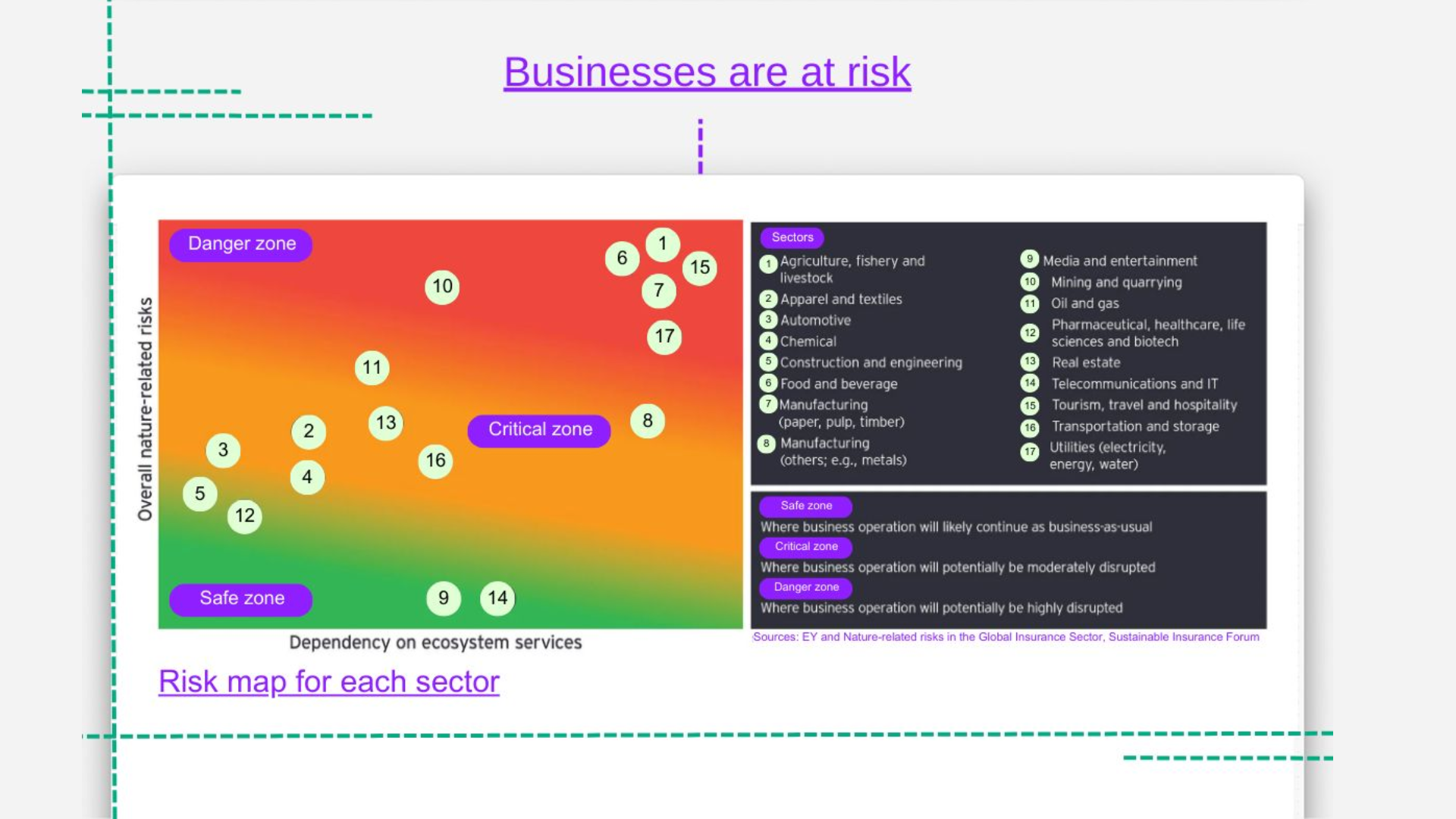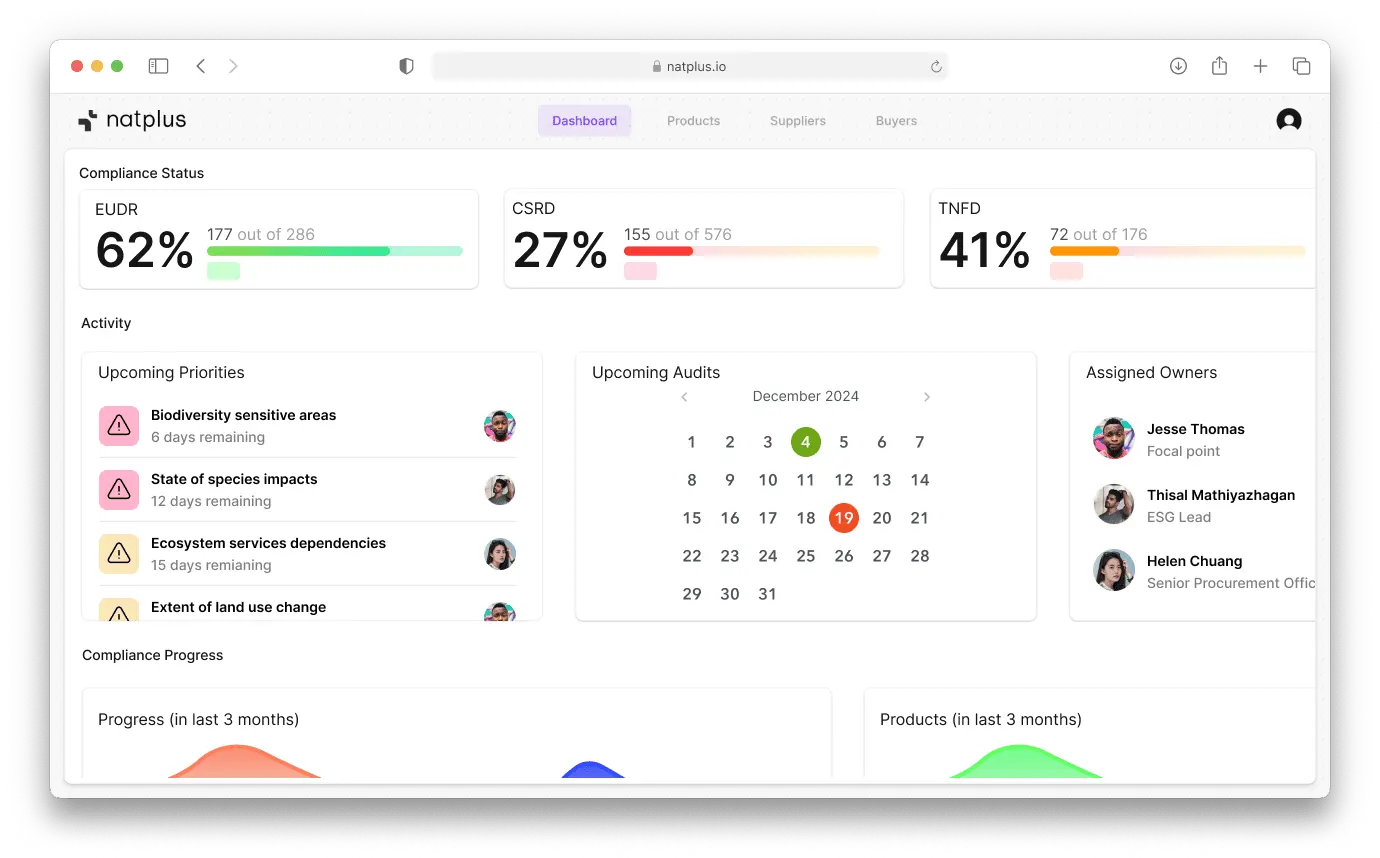Drowning in Data, Starving for Insights: How Transparent Nature-Related Data Can Drive Real Change
In this article, we examine the risks of data overload, strategies to mitigate these challenges, and the role of AI in facilitating efficient and targeted nature-data analysis.

In today’s business landscape, companies are inundated with vast amounts of data but often struggle to extract meaningful and actionable insights—particularly in relation to nature and biodiversity. Biodiversity loss, ecosystem services, and land use reporting have become increasingly critical issues, yet the inconsistency and sheer volume of data frequently leave businesses uncertain about where to begin.
What businesses truly require is structured, transparent, and actionable data. Companies need support in filtering through complex datasets to identify priorities and determine the actions that will have the most significant impact. In this article, we examine the risks of data overload, strategies to mitigate these challenges, and the role of AI in facilitating efficient and targeted nature-data analysis.
The State of Biodiversity and Business
Biodiversity loss has been identified as one of the most pressing global risks, with the potential to disrupt supply chains, business operations, and entire economies. When ecosystems fail, supply chains fail. Despite this, many businesses have prioritized climate targets over biodiversity initiatives.
While many employees recognize that their organizations could be doing more to address biodiversity concerns, a lack of resources and expertise frequently prevents significant progress, with 4 in 5 sustainability professionals stating that their businesses are not doing enough to address nature and biodiversity (The State of Biodiversity and Business Report 2024, Trellis Group).

Meanwhile, regulatory pressures and investor expectations for greater transparency regarding nature-related impacts continue to increase, requiring companies to take decisive action.
Essential Questions for Businesses:
- Are you fully aware of where your raw materials and ingredients originate?
- Do you have a comprehensive understanding of how your business impacts nature?
- Are you aware of the ecosystem services on which your products depend?
- Are you prepared to comply with emerging regulations and frameworks such as CSRD, EUDR, and TNFD?
For many businesses, the answer to these questions is unclear. The interconnected nature of ecosystems means that a disturbance to a single species can have cascading effects, making impact assessments complex. As companies face increasing regulatory obligations, they frequently struggle to determine the appropriate starting point for compliance.
The Risks of Data Overwhelm
The rapid increase in available data has created a phenomenon known as decision paralysis. This is especially true in today’s data-driven world, where 74% of professionals report that the number of decisions they make daily has increased tenfold since 2020.
When dealing with nature-related data, which often involves intricate, multi-layered relationships, businesses encounter several risks:
- Decision paralysis – Uncertainty about where to begin results in inaction.
- Inefficiency – The process of manually sorting through large volumes of unstructured data wastes time and resources.
- Erroneous decision-making – Misinterpretation of data can lead to regulatory compliance issues and operational setbacks.
- Reputational damage – Lack of clarity and misrepresentation of sustainability efforts can result in accusations of greenwashing.
Addressing Data Overload Through AI-Driven Solutions
The concept of "drowning in data but starving for insights" is more relevant than ever. Without the appropriate tools, businesses find it challenging to navigate biodiversity metrics, carbon sequestration data, and ecosystem assessments. AI-powered solutions provide a path forward by enabling companies to streamline their approach to nature-related data management.
1. Overcoming Data Overload
Challenge: Companies struggle to assess the impact of raw material sourcing due to an overwhelming volume of data from supplier disclosures, ecosystem reports, and satellite imagery.
Solution: AI-Driven Data Processing & Risk Mapping
Geospatial analysis can efficiently analyze diverse datasets to evaluate the effects of sourcing on endangered ecosystems, deforestation risks, and areas of water stress.
2. Improving Data Quality
Challenge: Outdated or inconsistent supplier reports lead to inaccurate environmental assessments and regulatory non-compliance.
Solution: AI-Powered Data Cleansing
By identifying and correcting inconsistencies in satellite imagery, supplier documentation, and habitat assessments, data refining tools ensure that biodiversity data remains accurate and reliable.
3. Extracting Actionable Insights
Challenge: Businesses recognize biodiversity risks within their supply chains but lack clarity on how to mitigate them.
Solution: AI for Insight Generation
Automated insight generation tools can uncover patterns within biodiversity and supply chain interactions, enabling companies to prioritize effective sustainability initiatives based on data-driven insights.
The Role of Data Transparency in Regulatory Compliance
As global environmental regulations evolve, businesses face increasing pressure to disclose their nature-related impacts with greater accuracy and consistency. Transparent, well-structured data is no longer optional—it is essential for meeting compliance requirements and avoiding financial and reputational risks.

Companies must ensure that their biodiversity and ecosystem data is accessible, verifiable, and aligned with regulatory standards. Without transparency, businesses risk misreporting their environmental impact, leading to compliance violations and accusations of greenwashing.
Key Regulations Requiring Transparent Nature-Related Data:
1. EU Deforestation Regulation (EUDR)
The EUDR aims to minimize the EU’s contribution to global deforestation and forest degradation by requiring businesses to prove that their products do not originate from deforested areas or illegal production. Transparent supply chain data enables companies to track sourcing locations, assess deforestation risks, and submit verifiable due diligence reports.
2. Taskforce on Nature-related Financial Disclosures (TNFD)
TNFD provides a framework for companies to assess and disclose their dependencies and impacts on nature. Transparent data collection helps businesses map their supply chains, identify high-risk biodiversity areas, and produce standardized reports that align with investor and regulatory expectations.
3. Corporate Sustainability Reporting Directive (CSRD)
Under the CSRD, companies must disclose how their activities affect people and the environment, including biodiversity and ecosystem impacts. Clear and structured data is critical for identifying ecosystem services that businesses rely upon, measuring operational risks, and producing accurate impact assessments.
By prioritizing transparency in their environmental data, companies can strengthen regulatory compliance, enhance investor trust, and contribute to meaningful biodiversity conservation efforts.
Lessons from Supply Chain Transparency Across Industries
Supply chain transparency is essential for ensuring sustainability, regulatory compliance, and consumer trust. Businesses that lack clear visibility into their supply chains risk reputational damage, regulatory penalties, and operational inefficiencies. The following industries highlight the increasing need for verifiable data on sourcing and environmental impact:
Food Industry
Consumers are demanding greater transparency regarding the origins of ingredients and raw materials. To meet these expectations—and comply with sustainability regulations—food companies must implement robust tracking systems that ensure traceability, responsible sourcing, and adherence to biodiversity protection standards.
Fashion and Apparel Industry
The fashion industry faces significant scrutiny due to its reliance on complex global supply chains, often linked to deforestation, water pollution, and unethical labor practices. Brands must ensure transparency across their sourcing processes, from raw material extraction to production and distribution. Implementing traceability tools and supplier disclosures can help companies verify sustainability claims, reduce environmental impact, and meet regulatory expectations.
Beauty and Personal Care Industry
As consumers and regulatory bodies demand greater accountability, beauty brands are under pressure to disclose the origins of their ingredients—especially those derived from natural resources. Industry leaders have responded by forming coalitions such as TRASCE and NATRUE, which promote supplier data transparency and standardized sustainability reporting.
Given their high dependence on natural resources and ecosystem services, these industries are particularly vulnerable to the risks associated with biodiversity loss and environmental degradation.

Companies that proactively enhance supply chain transparency not only mitigate regulatory and reputational risks but also contribute to long-term environmental resilience and sustainable business practices.
Moving Towards Structured, Actionable Nature-Related Data
In conclusion, more data does not inherently lead to better decision-making. Businesses need structured, transparent, and actionable data to make informed sustainability decisions. Open data models and improved supply chain transparency offer key advantages:
- The ability to accurately track supplier impacts on biodiversity and ecosystems.
- Better risk assessments to support responsible and sustainable sourcing.
- Compliance-ready reports that align with evolving regulatory requirements and investor expectations.
By leveraging AI and data-driven strategies, businesses can transition from data paralysis to actionable insights, ultimately driving real-world improvements in nature conservation and corporate sustainability.
At natplus, we are helping businesses do exactly that.
Natplus helps you manage your organization's biodiversity impacts through targeted, easy-to-digest data. Our AI-powered, science-based platform helps businesses filter out the richest nature-based data and assess, trace, and report their nature-related impacts with just a few clicks.
We are helping businesses move towards nature-positive strategies, with ease.
Find out more about what we do here and book a free demo of our AI digital platform today.


